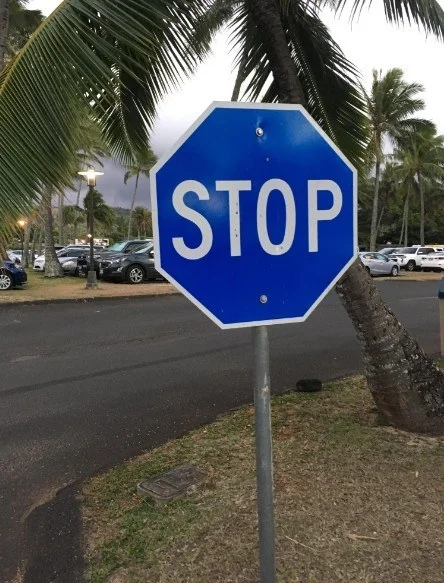Blue stop signs do exist, but they aren’t issued or recognized by the U.S. Department of Transportation for use on public roads. Instead, these signs are typically found on private property, such as gated communities, university campuses, large parking lots, or privately managed roads. While they don’t carry the same legal authority as standard red stop signs, they serve an important function in regulating traffic and ensuring safety in areas not governed by public traffic laws.
Historically, the color of stop signs has evolved. In the 1910s, stop signs were yellow with black lettering because those colors were more visible at night under early lighting conditions. It wasn’t until the 1950s that red became the standard color for stop signs, largely due to its strong association with warning and danger. Advances in reflective materials also made red signs more practical and visible, even in low light.
Each color used in traffic signage has a specific meaning. Blue typically indicates services or informational signs, such as those directing drivers to rest stops or hospitals. Green is used for directional guidance, yellow for general warnings, and black-and-white signs are regulatory, meaning they provide instructions that must be followed. A blue stop sign, therefore, breaks from these long-established conventions, which is why it’s not permitted on public roadways.Despite being unofficial, blue stop signs on private property still play a role in managing traffic flow and preventing accidents.
Property owners may choose blue for aesthetic reasons or to differentiate from public signage, but drivers are still expected to obey them. Ignoring such signs could lead to accidents or even trouble with local enforcement, especially if the property has its own security measures in place.Though unconventional, blue stop signs remind us that traffic control doesn’t always follow a universal template. In the end, whether a stop sign is red, blue, or any other color, the goal is the same: to promote safety and order. Paying attention to these signs, even on private property, is always a smart and responsible choice.
